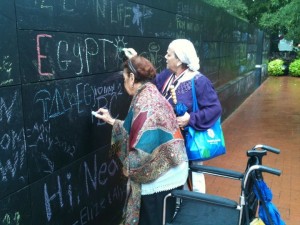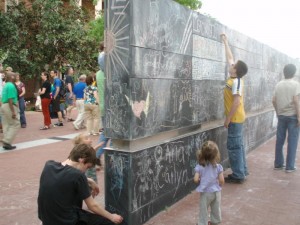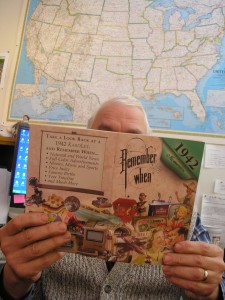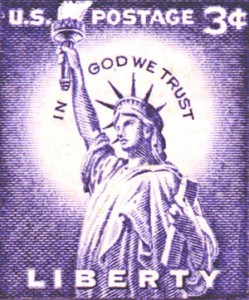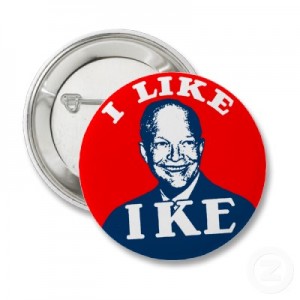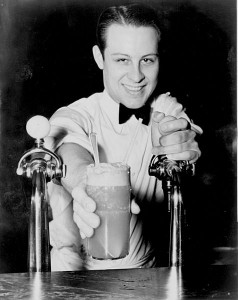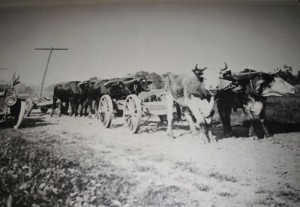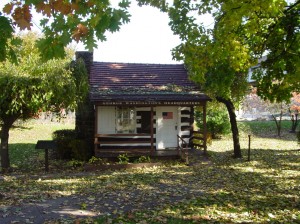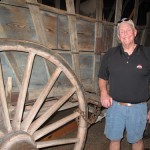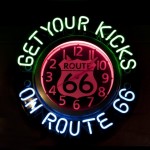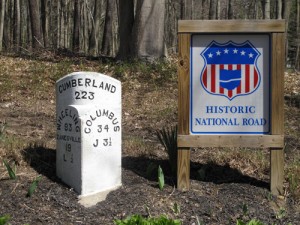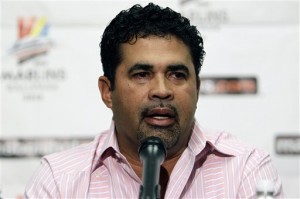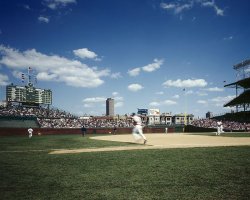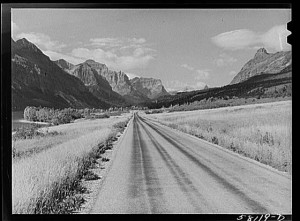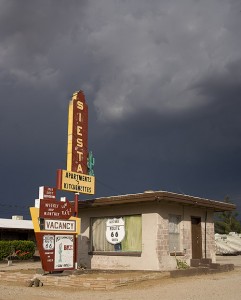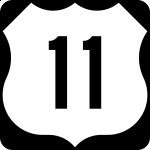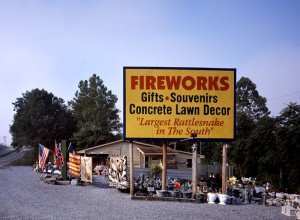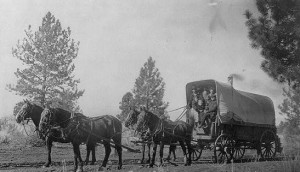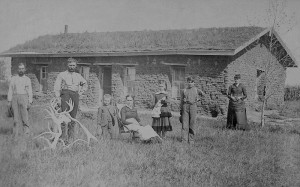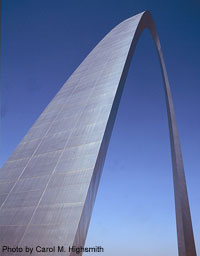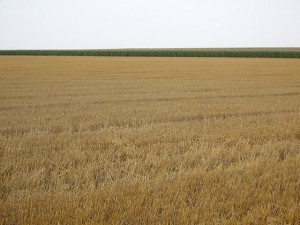We drove into Detroit, Michigan at around midnight. In some U.S. cities, there are areas that still have some life at that hour – late-night restaurants closing up, bars open, people milling around; there’s a lovely hum.
But that’s not we saw when we first arrived in Detroit. The streets we drove on were pitch dark and deserted. We wanted to get a bite to eat, but when we finally found a place, there was a group of men standing on the corner outside hurling rocks into the street. We decided not to get in their way.
We went to pick up a friend, a Detroit-based rapper who was putting us up for the night. He swung into the car and directed us to drive through red lights: it wasn’t safe to stop for them. We took his advice.
Motor City
As home base for the three major U.S. auto companies, Ford, General Motors, and Chrysler, Detroit has been nicknamed “Motor City,” or “Motown.” Motown Records, based in Detroit, made the name synonymous with American rhythm and blues music, turning musicians such as Diana Ross and Smokey Robinson into superstars.
During the day we saw remnants of the city’s former wealth: huge, beautiful old homes; skyscraper office buildings downtown; and wide-open streets designed for a parade of great sparkling automobiles.
But those high-rolling days are gone.
Over the past few decades, tough competition from overseas manufacturers has forced America’s car industry to massively downsize its workforce. At present, Detroit’s unemployment rate stands at 11.7 percent — more than two percent higher than the national average.
Race Riots, Ghost Towns
Detroit’s troubles have not been just economic. Racial tensions sparked a major riot in 1967, when an early-morning police raid on an after-hours club resulted in five days of violence and looting. Forty-three people died in the clashes.
Those events led to the exodus of many white residents to the suburbs, a phenomenon nicknamed “white flight.”
Now, amid crumbling infrastructure, much of the middle-class African American community has moved out as well. U.S. Census figures show the city’s population has plummeted 25 percent in the past decade.
Detroit, once a city of 2 million people, is now home to 700,000.
In some parts of the city, we saw dilapidated buildings stand empty, covered in graffiti. Homes with smashed windows and broken-down doors have been left to rot. Shops are crumbling, deserted.
Recovery
As an outsider on a brief visit, I found something oppressive about Detroit and also something raw. In a tantalizing way, I felt like I could never be sure what to expect. It felt like a city on the verge of something.
Residents say the city is beginning to recover. With help from the 2008 government bailout, auto companies are beginning to hire again. Young people are starting new, socially-conscious businesses and buying properties. The guys who we stayed with are making innovative music and videos and selling t-shirts at their shop Division Street Boutique. Elsewhere, organizations like Hantz Farms are encouraging urban agriculture in a city where vacant land is cheap and plentiful.
These Detroit residents, struggling to revitalize their city, remind me of stories of pioneers a century and a half ago, trying to make it in America’s vast western wilderness.







